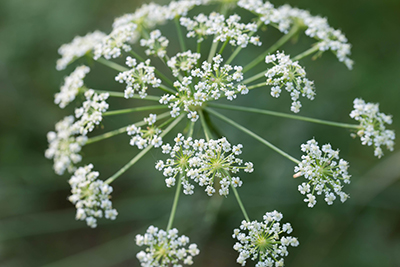Our sunny growing season is barely long enough for tomatoes to ripen, but there are plenty of things we can grow and enjoy while waiting for tomato time.
Flowers usually require warmth of the sun to open and bear fruit. There are many plants that will give us colorful foliage and flowers in the shade. Some of the best shade perennial plants for landscapes are heuchera (coral bells of many leaf colors), hellebores (blooming late winter until July), bleeding heart, grasses of many stripes and colors, meadow rue (thalictrum), ferns of various textures, solomon’s seal, dianthus, hostas (with assorted leaf patterns of blues and yellows), and astilbe with showy flowers. Most of these plants are deer resistant because of their sweet smells. Except hosta; hosta is deer candy.
There is a short list of annual flowers that can be successfully enjoyed in shady gardens. Alyssum, baby blue eyes, begonias, calendula, cleome, red coleus, fuchsia, yellow monkey flower, nicotiana are a few that will add color to areas that rarely see the sun.
Fruiting vegetables such as tomatoes, peppers, cucumbers and squash need at least six hours of sun daily to produce a harvest. Non-fruiting vegetables can do well in as little as three hours of sun per day. The brassica/Cole crops (broccoli, cabbage, cauliflower, turnips, kale, brussels sprouts, kohlrabi and rutabaga) may take longer to mature in partial shade but are less likely to bolt to the flowering stage. Root crops (radishes, carrots, beets, potatoes) can get enough light to their leafy tops to develop under the soil surface. Leafy greens (lettuces, chard, spinach, bok choy, kale) are actually happier and sweeter when grown without midday sun. Cucumbers and pole beans will tolerate shade if they get a little sun in the afternoon while bush beans and celery prefer morning sun. Garlic, cilantro, and parsley are shade-tolerant herbs. Perennial vegetables that thrive in partial shade include rhubarb, asparagus and Jerusalem artichokes.
Starting seeds in a sunny area (or indoors) and transplanting to shady areas will bring better success. Leave a little more space between plants to maximize light to them. Raised beds can be a little warmer, even in the shade. Shady areas are slower to warm up in spring and quicker to cool down in fall, so row covers or other protection can extend the growing season. One advantage to shady gardens is less evaporation, less-frequent watering. Slugs and snails lurk in shady areas, so traps are recommended.
A search for “shade plants” at http://extension.oregonstate.com brought up “Drought Tolerant Plants for Shade,” a long list of shrubs, perennials and groundcovers that require less sun and less water. At that site we can also click on “Ask an Expert” to get personalized advice from specialists at Oregon State University. If you have a photo to show the problem, along with a description, it can be attached to the request for information to get a more accurate answer.
– Diane Hyde,
OSU Linn County Master Gardener
